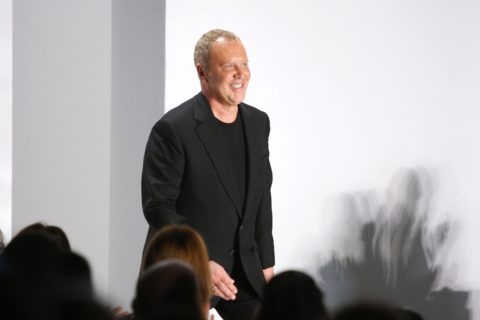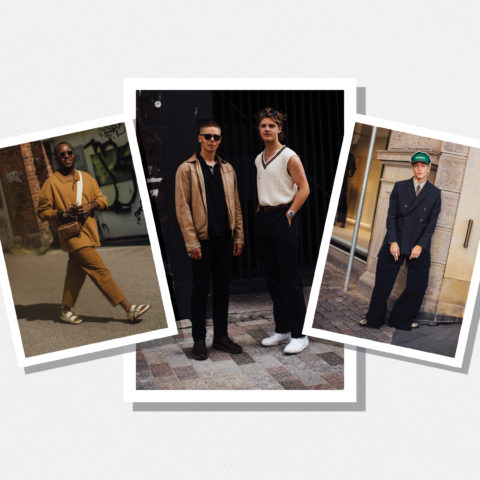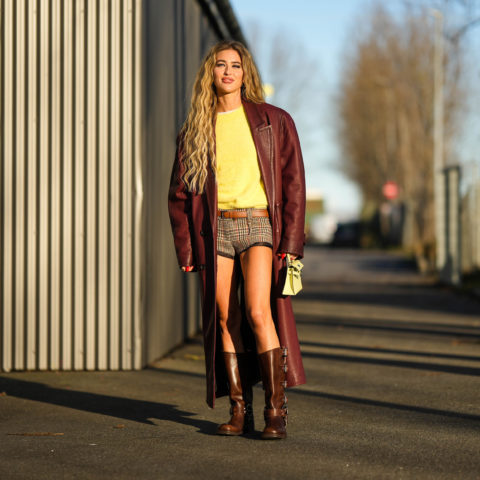An American In Paris: An Interview with Michael Kors circa the Céline Era
"After decades in the business, Michael Kors is an overnight sensation in both New York and Paris."
Since its launch in 1977, FASHION magazine has been giving Canadian readers in-depth reports on the industry’s most influential figures and expert takes on the worlds of fashion, beauty and style. In this series, we explore the depths of our archive to bring you some of the best fashion features we’ve ever published. This story, originally titled “Michael, Michael Everywhere” by Tim Blanks, was initially published in FASHION’s October 2000 issue.
Americans in Paris have been one of the just-won’t-quit stories in fashion over the past few years, a state of affairs that Tom Ford’s debut at Yves Saint Laurent isn’t likely to change. But Texan Tom’s trail had already been well and truly blazed by hypercool New Yorkers. Marc Jacobs had possibly the easier job. Louis Vuitton’s fashion identity was a vacuum he could fill as he chose. Michael Kors, the blond, blue-eyed favourite of Park Avenue princesses, had to contend with Céline, the immutable essence of Parisian bourgeois chic. That he has succeeded so well is the purest testament to the ongoing globalization of fashion. Oh, and it also speaks volumes about his own charming way with the world and his immaculate sense of timing. Playful luxury? What more could an IPO baby want?
Michael Kors: A lot of people talk about finding the heritage, but there are a lot of houses that have no heritage-so you have to create one. Céline has an amazing history of luxury and quality and a very French sort of indulgence, so it’s fun for me to take the iconic things from the house and blow the dust off them.
Tim Blanks: Such as?
What could be more Parisian than the chain-link fence round the Arc de Triomphe? It was the inspiration for the Céline chain, which is our insignia. So I’ve played with it, turning it into sandals, threading it round the waist of jeans, modernizing it as buckles. It’s interesting to mix, say, corduroy with the most extravagant French couture jacket with a chain closure.
You’ve always got a definite character in mind when you create a collection, like that Jackie O-Jennifer Lopez combo from your own Palm Bitch collection. This time, you’re talking about a little, French girl straight out of boarding school and readying herself for a life of jet-set glamour. That sounds kind of perverse to me.
I think there is something interesting about things always being a bit of a contradiction. I look at someone like Chloë Sevigny and she’s got really amazing style—she wears very sophisticated clothes in an offhand way and that’s the kind of girl we’re talking about. It’s the attitude that a woman brings to how she gets dressed. The clothes are very polished and luxurious, so it’s not like we’re suddenly doing schoolgirl clothes. They’re very indulgent, in fact, but it’s how the woman wears her indulgence that counts.
But the house of Céline is much more the notion of stealth luxury than your own show in New York, which was very over the top.
New Yorkers as a whole really have a strictness to how they dress—a real neatness. They look very turned out, and this season that was what New York was about for me. The French like to play with their clothes; they have fun with fashion. This is really about mixing the two extremes—the very casual and the very luxe. Céline you can wear top to toe, or you can take a piece and inject it into your existing wardrobe.
But now you’ve been exploring the outer limits of excess, what can you possibly conceive of as the next move?
The workmanship in Paris means it’s limitless what we can do. We’ve sliced fur up this season to make it look like herringbone and plaids. We can do incredible details with embroideries and feathers. Again, it’s how you wear it. Even if the clothes are super extravagant, I never want them to feel heavy or old-fashioned. I want them to wink at the glamour of the past, but I want them to stay modern. And a lot of that has to do with the fabrics we have now. If you put on a stretch-cashmere, embroidered cocktail dress, you might feel as though you’re going to a fabulous party at Regine’s in 1981. But the reality is, the dress feels like a T-shirt. It wouldn’t have been possible to make that dress back in 1981, because back then it would have been weighed down with structure and lining.
You often invoke the past. What does nostalgia mean to you?
For someone who’s a real modernist, I’m the ultimate nostalgist. You can’t have the future without the past. It’s just that I like streamlined things. No matter how extravagant the clothes might be, they’re still based on the idea that these clothes are here to make people look tall and thin, make them feel good about themselves. You know we’re never going to add a third sleeve to a jacket for novelty’s sake! So I’m actually very much a traditionalist in my own way. I love old movies; I love traditional restaurants. I’m very happy at the “21” Club [in New York], I’m not going to be the first person to run to Pastis. At the same time, I sit around with my eyes and ears open, looking for whatever is fresh, because if you blend old and new you’re going to have the best of it all.








